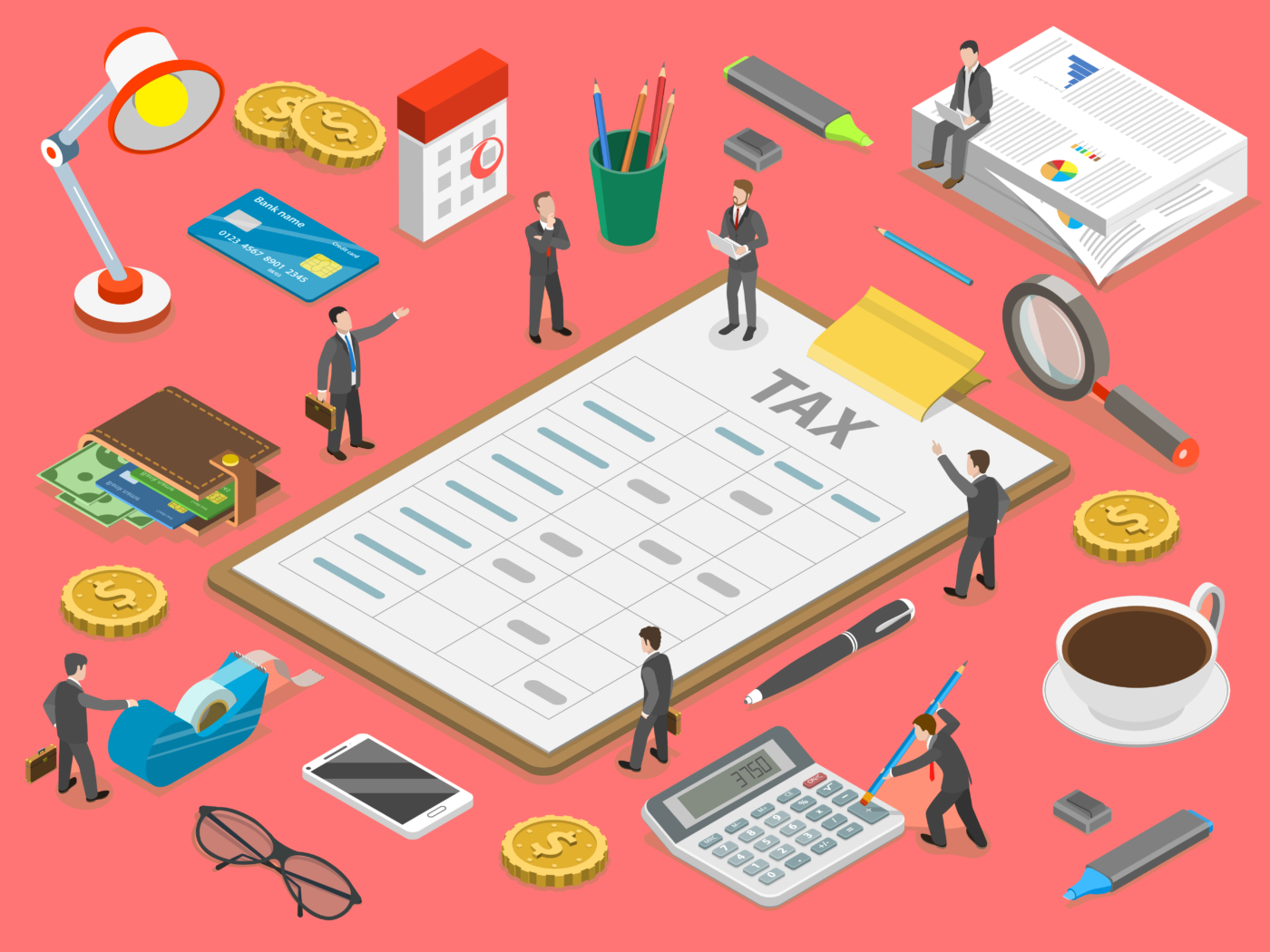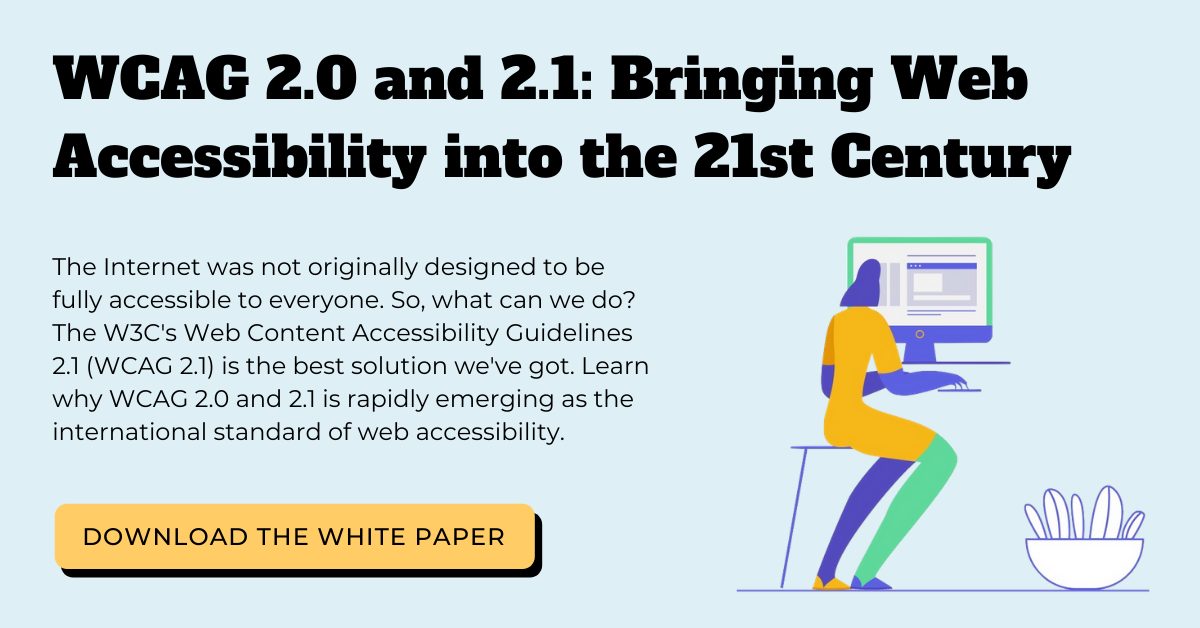Web Accessibility for Filing Taxes
Updated: March 16, 2021
Taxes are money individuals and corporations pay in order to fund their government. Federal, local, and state governments use taxes to finance various activities. They can be used to pay for public education, roads and infrastructure, law enforcement, scientific research and more.
Despite certain conversations about taxes in the United States, most Americans believe that paying taxes is a good thing. According to IRS survey data, 94% of Americans agree that paying their fair share of taxes is a civic duty.
Filing taxes can be a daunting task for taxpayers. In order to ensure accuracy, most people opt for using a tax preparation software, hiring a professional accountant, or a combination of the two.
For most people, using an online tax preparation software is the best option. It’s like having a virtual accountant by your side every step of the way but in the comfort of your home. A 2018 IRS study found that 90% of people will e-file their tax returns because it’s fast, convenient, and secure.
However, for the 61 million adult Americans living with a disability, filing and submitting tax forms online can be even more complicated because of web inaccessibility.
It’s imperative that all taxpayers, regardless of ability, have fair and equal access to their societal responsibilities. In this post, we’ll discuss how to make the process of filing taxes more accessible for millions of Americans with disabilities.
Bringing Web Accessibility into the 21st Century ➡️
Accessibility is the Law
The Americans with Disabilities Act (ADA) is a broad, anti-discrimination law that was enacted in 1990. Its purpose is to guarantee equal opportunity for people with disabilities in all areas of public and private life. The ADA consists of 5 titles and Title II and III specifically tie to web accessibility.
Title II
Title II prohibits disability discrimination by all public entities at the local and state level. In addition to federal taxes, many people pay state and local taxes as well. Therefore, state and local governments must ensure that all taxpayers can access the required tax information in order to submit their returns.
Title II mandates state and local governments:
- May not refuse to allow a person with a disability to participate in a service, program, or activity simply because the person has a disability.
- Must provide programs and services in an integrated setting, unless separate or different measures are necessary to ensure equal opportunity.
- Must furnish auxiliary aids and services when necessary to ensure effective communication, unless an undue burden or fundamental alteration would result.
- Shall operate their programs so that, when viewed in their entirety, they are readily accessible and usable by individuals with disabilities.
When it comes to tax preparation, it violates the ADA when people with disabilities are not accommodated.
Title III
Title III of the ADA pertains to commercial facilities that operate public accommodations. This includes hotels, restaurants, retail stores, etc.
Under Title III, no individual can be discriminated against on the basis of disability with regards to the full and equal enjoyment of the goods and services provided by an establishment.
In the past, a “place of public accommodation” was defined as a physical place, like a brick and mortar store. However, with the rise of the internet, recent lawsuits have broadened the definition and have set a strong precedent on the ADA’s implication to include online businesses as well.
The NFB v. H&R Block
In 2013, the National Federation of the Blind (NFB) filed a lawsuit against one of the largest tax preparation companies in the United States, H&R Block. The NFB claimed that the company’s website and mobile application was not accessible to alternative technologies for disabled taxpayers. That same year, The U.S. Department of Justice (DOJ) joined the lawsuit against H&R Block to enforce Title III of the ADA.
H&R Block provides a variety of services through its website and apps, including tax preparation, instructional videos, video conferences, location information, and more. The company’s failure to make their web content accessible to individuals with disabilities left them excluded from enjoying the same services as their abled counterparts.
People with disabilities have relied on a multitude of assistive technologies to access online information for years, including screen reader software, closed captioning, and keyboard navigation. When developers fail to code their websites and apps to accommodate these technologies, users with disabilities are left out.
Learn Why WCAG is Emerging as the Standard for Web Accessibility ➡️
WCAG: The International Standard for Accessibility
Did you know? 71% of people with disabilities leave a website immediately if it’s not accessible. Companies must make their digital information and services accessible, or else a large percentage of the population will be excluded.
The Web Content Accessibility Guidelines, otherwise known as WCAG, are a series of guidelines published by the World Wide Web Consortium (W3C). It’s an international standard used amongst governments, institutions, and organizations in order to make the web accessible.
WCAG provides criteria for achieving inclusive web design and has three levels of conformance: A (lowest), AA, and AAA (highest).
As the world continues to shift to an online presence, WCAG is continuously updated to improve accessibility guidance for users with disabilities.
Many countries around the world have updated some form of WCAG, including the United States. It’s referenced in Section 508 of The Rehabilitation Act and some state laws.
Click on the map below to learn more about captioning and web accessibility laws in your state.
[us_map]In order for websites and mobile applications to be accessible, they need to meet four key principles:
- Perceivable: users must be able to perceive the information and user interface in a way that is presentable
- Operable: users must be able to operate the interface successfully
- Understandable: users must be able to understand the information and user interface
- Robust: content must be robust enough that it can be interpreted reliably by a wide variety of user agents, including assistive technologies
Taxes are an essential part of life in the U.S. and it’s important that everyone has equal access. When accessibility is made a priority, everyone can participate in our duty to society.







